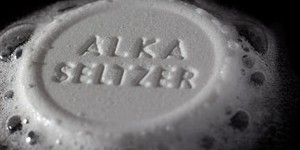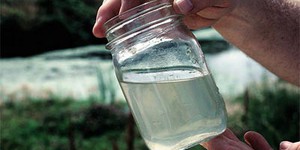Others Like “Red Eye” (top 20 results)
|
This project can apply to soccer, hockey, baseball and many other sports. What is the effect of stopping the kick/shot/swing at the moment of impact vs. following through? Think of a way to measure the outcome in each case, and explain your results. (idea from Gardner, 2000, 83-85; for more information with regard to specific sports, see: Barr, 1990, 12-14; Gay, 2004, 142-144; Adair, 2002, 30.)
Read more
Block off one-third of a soccer net with a cone, 5-gallon bucket or some other suitable object. Shoot into the smaller side from a set distance, but systematically varying the angle to the goal line. Take enough shots at each angle to get a reliable sample. How does success vary with angle? For a basic project: How do you think your success rate will vary with angle? Draw a conclusion from your experimental results. A bar graph showing success rate at different angles can help to…
Read more
When you take medicine, it needs to dissolve in order to be passed into your bloodstream to have an effect. On the other hand, the drug needs to be packed into a small, dense pill to make it easier to swallow. How does the delivery method of a drug change how quickly it enters the bloodstream? Compare different brands of a drug to find out which brands dissolve the quickest. Does the pH of the stomach (which is usually between 1 and 2) matter? Compare coated to uncoated pills: does the coating…
Read more
It is important to ensure that we all have good clean water to drink that is not contaminated by heavy metals or chemicals. One common pollutant in a water supply is lead in old pipes or paints that can leach into the water and cause lead poisoning. There are different kits available for testing the presence of lead and other contaminants in water. Test your water supply, and also the water in some local ponds, lakes or streams. The same contaminants that can harm you can also harm wildlife. …
Read more
You can measure the diameter of the Sun (and Moon) with a pinhole and a ruler! All you need to know is some simple geometry and the average distance between the Earth and Sun (or Moon). An easy way to make a pinhole is to cut a square hole (2-3 cm across) in the center of a piece of cardboard. Carefully tape a piece of aluminum foil flat over the hole. Use a sharp pin or needle to poke a tiny hole in the center of the foil. Use the pinhole to project an image of the Sun onto a wall or piece…
Read more
What causes landslides? The USGS Landslide Hazards Program conducts research needed to answer major questions related to landslide hazards. Where and when will landslides occur? How big will the landslides be? How fast and how far will they move? What areas will the landslides affect or damage? How frequently do landslides occur in a given locality? Investigate the patterns of landslide occurrence in your area. Are they related to locations, geology, or topography? Are they more frequent…
Read more
Did you know that you can make a simple hygrometer (a device for measuring the relative humidity of the air) with hair? Search online for instructions to build one. Does the type of hair used in the hygrometer affect the accuracy of the results? Do some types of hair respond faster than others? Do some types of hair give a larger (or smaller) response? You could get hair samples from classmates, or a local beauty shop. Use hair samples of equal length to construct each hygrometer. To force…
Read more
Imagine a symmetrical grid of nine points superimposed over the ball. Kicking the ball squarely on the center point imparts no spin, but kicking on any of the other points will impart spin on the ball. How will the resulting spin affect the trajectory of the ball for each of the 8 outer grid points? Kicking the ball with a sliding motion of the foot is another way to impart spin. Once you've made your predictions, you can set up to test them with a soccer ball, video camera and a tape…
Read more
You can model this with an ice cube sliding down a plank: how high do you need to lift the end of the plank before the ice cube starts to slide? Try this with one side plain wood and the flip side waxed wood (use paraffin wax, candle wax or ski wax). Make sure both sides are equally smooth to start with. Do at least three trials. More advanced: using what you know about the forces acting on the ice cube, derive equations to calculate the coefficient of friction for each case. Variation:…
Read more
You can look up information about local air pollution, such as the Air Quality Index (AQI), online or even get alerts on your phone. But what if you could wear a device that continuously monitors the air quality around you in real time, alerting you to unsafe levels? Such a device could alert a person with asthma when they need to go inside, let you know if smoke from a nearby wildfire is drifting in your direction, or signal when it is time to take a break on a hazy summer day. The Science…
Read more
|
Explore Our Science Videos
Write Secret Messages With Invisible Ink!
Make a Model to Explore the Distance from the Planets to the Sun
DIY Mini Drone Part 7: Automatic Balancing









